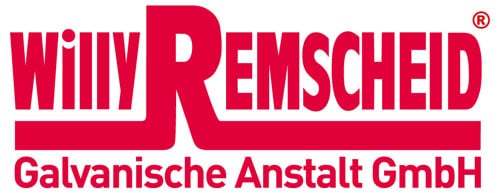Electroplating company chrome-plates the Mercedes star
Photo: Beier
Managing Director Thomas Linke (right) and Ralf Pohlmann, Head of Polishing, look forward to the completion of the latest robot system.
The Willy Remscheid company focusses on robot technology, sustainability and clean workplaces.
by Michael Kremer
Solingen
Electroplating – some people’s hair stands on end when they hear the term. The electrochemical surface treatment process has always been considered a dirty child and is primarily associated with dirt and odours. That was once upon a time. Today, in the age of Electroplating 4.0, the image has changed. A glance at the Willy Remscheid electroplating plant will prove any doubters wrong. Everything is clean and free from chemical odours. No neighbour is aware of what is going on behind the company’s closed doors.
‘Years ago, we set ourselves the goal of ensuring that visitors don’t immediately realise that they are in an electroplating shop’, says Managing Director Thomas Linke. In the past five years alone, the company has therefore invested around 500,000 euros in tidiness and cleanliness in the company buildings. Once they had acquired a taste for it and were additionally motivated by the positive response from customers, further steps were taken towards sustainable production. Last year, a new energy system with photovoltaics and a combined heat and power plant was built at a cost of 400,000 euros. ‘And we will continue to invest in the environment. We have to use resources sensibly’, says the
managing director, looking to the future.
From a technological point of view, it has already begun at Willy Remscheid. The first robots were purchased there two years ago to automate the electroplating process. ‘We started with three all-round systems’, Linke recalls the beginnings. The experience gained from this led to further systems that were designed according to the company’s own requirements. The third generation of robots is now being installed in the electroplating department, and the fourth and fifth generations are in the planning stage. The company has invested around 1.5 million euros in this technology.
‘We automate and digitalise a lot’, says Linke. He knows full well that it will not be possible to work completely autonomously. Individual work steps will still have to be carried out manually. This begins with the assembly of the carriers with small parts and continues through to the final inspection. Linke prefers to rely on the trained eyes of his employees. ‘Every part that we electroplate is inspected individually,’ he says.
Despite the constant drive towards automation by the managing director and the plans for the future, the number of employees has remained constant at around 100 for years. This is unlikely to change much in the future. ‘We are expanding without creating additional jobs’, says Linke. However, global economic conditions could throw a spanner in the works. ‘If the automotive industry suffers, we suffer too’, explains Linke.
A good 90 per cent of his customers come from the automotive industry, including Bentley, Rolls Royce, Maserati and Lamborghini. However, the number of parts electroplated for these luxury brands
are limited. In this respect, Daimler-Benz plays in a completely different league at the Willy Remscheid electroplating plant. ‘We electroplated all the metal Mercedes stars on the bonnets’, says Linke. His voice resonates with melancholy. ‘We used to produce two million chrome-plated stars a year, but now we only produce 350,000’, says the managing director. The others are made of plastic.
-> Original article Solinger Morgenpost from 20.3.2019

